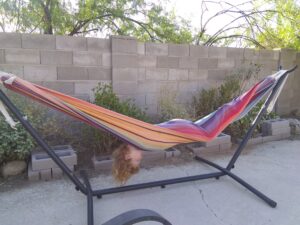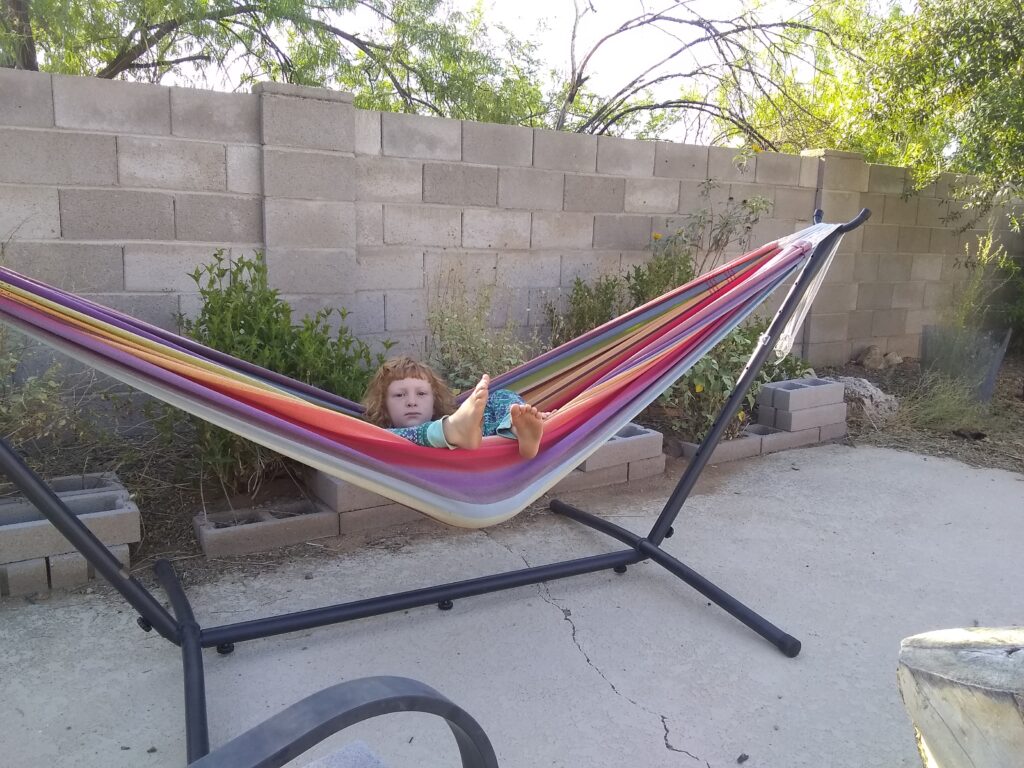“Cats, dogs, yummy supper, getting to play Minecraft this afternoon, getting to play soccer after supper” rattled off my 8-year-old during “Thank-yous” at the end of supper last Sunday. Like a lot of Tucson families, we hide during the hotter parts of spring and summer days and emerge outside in the cooler parts: sun-up and sun-down. Did you know there’s a word for that? “Crepuscular”. Sure, we are awake and active most of the day, technically diurnal creatures by biology. But the times for playing backyard soccer, watering plants, or taking the dog for a walk, are dawn or dusk. Twilight. 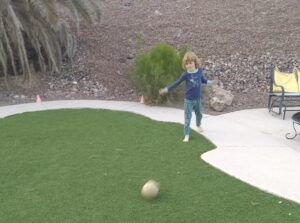
Critters at sun-down
 One bobcat jumped the wall across the street just after dusk. Two coyotes crossed Highway 79 on an evening drive home from Gold Canyon. Three javelina jogged up the street while my husband, dog, and I strolled past on a sunset walk. A handful of neighbors emerged to chat too. These wildlife sightings plus the usual bats, birds and crickets were all prizes earned by my family being outside during late spring twilights in one week alone. I’m not even a night owl by nature. When we are crepuscular, the paths of both diurnal and nocturnal animals cross anyway.
One bobcat jumped the wall across the street just after dusk. Two coyotes crossed Highway 79 on an evening drive home from Gold Canyon. Three javelina jogged up the street while my husband, dog, and I strolled past on a sunset walk. A handful of neighbors emerged to chat too. These wildlife sightings plus the usual bats, birds and crickets were all prizes earned by my family being outside during late spring twilights in one week alone. I’m not even a night owl by nature. When we are crepuscular, the paths of both diurnal and nocturnal animals cross anyway.
Breakfast with the birds
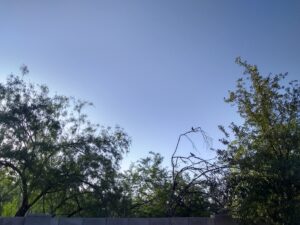 “We’re not going to do outside breakfast this summer like we have other years,” I told my boys the last week of school. I wanted to try shifting more activity to the evening, and I didn’t want to push my luck on the tradition of greeting each day together with food and stories and playtime. Imagine my surprise when they headed outside first thing anyway on their first day off of school! Kid 2 showed me the new bird nest in the palm tree. Both boys plotted out Minecraft construction while rocking on the rickety glider and wobbling on an old stump. I lay in the fake grass to continue the notes I was writing, just as easily there as on the table inside. Quail picked their way across the rocks, doves got frisky in the dead willow tree, a hummingbird hunted flies for breakfast above my worm bin. When I wrote this down a few days later, we had indeed slept in and stayed in because the sun was already high. I can be thankful for air conditioning too. And this year taught me a ton about flexibility. But when my kids and I are early birds we get to say “crepuscular”. How cool is that?
“We’re not going to do outside breakfast this summer like we have other years,” I told my boys the last week of school. I wanted to try shifting more activity to the evening, and I didn’t want to push my luck on the tradition of greeting each day together with food and stories and playtime. Imagine my surprise when they headed outside first thing anyway on their first day off of school! Kid 2 showed me the new bird nest in the palm tree. Both boys plotted out Minecraft construction while rocking on the rickety glider and wobbling on an old stump. I lay in the fake grass to continue the notes I was writing, just as easily there as on the table inside. Quail picked their way across the rocks, doves got frisky in the dead willow tree, a hummingbird hunted flies for breakfast above my worm bin. When I wrote this down a few days later, we had indeed slept in and stayed in because the sun was already high. I can be thankful for air conditioning too. And this year taught me a ton about flexibility. But when my kids and I are early birds we get to say “crepuscular”. How cool is that?
Nature to You early and late
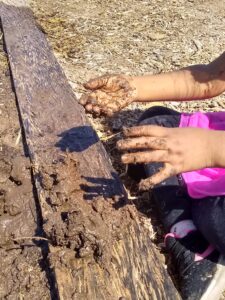 How do you and your kids adapt to hot days? If your goals this summer include gardening, animal observations, or just not being cooped up, try a Nature to You class early in the morning or at the end of the day. My Water Play in the Garden runs 8:00-9:00, and Backyard Nature Camps run either 8:30-9:30 a.m. or at dusk 6:00-8:00 p.m. That way we can be active outside before or after the intense daytime heat. Humans are desert critters too.
How do you and your kids adapt to hot days? If your goals this summer include gardening, animal observations, or just not being cooped up, try a Nature to You class early in the morning or at the end of the day. My Water Play in the Garden runs 8:00-9:00, and Backyard Nature Camps run either 8:30-9:30 a.m. or at dusk 6:00-8:00 p.m. That way we can be active outside before or after the intense daytime heat. Humans are desert critters too.
A new day
I was about to type up this entry early this morning, before the kids got up. At the kitchen table. While my dog stared at me to open the door. Message received. I brought my coffee outside, just me and the dog – and dozens of birds. The quail complaints and dove call-and-response are the sounds I can identify, and I’m OK just enjoying a twittering flock unseen a street over. Oh, it’s finches now chasing each other to a blooming ocotillo! The neighborhood continues to wake up with the spreading dawn. More birds, more birds vying for position, my neighbor stepping outside to contribute birdseed to the cause. More cars flow on Ina, now a plane putters overhead, soon my kids and husband will trickle out to the kitchen and maybe briefly out back. The day’s plans include room-arranging with the goal of making the indoors a peaceable kingdom for the bulk of summer days.
The 8-year-old opens the back door and makes a beeline for the hammock. It’s about 7:00 a.m., and the hammock is still in long shade from the east wall. “Right now and at night are when it’s nice outside. During the day it’s too hot,” he opines while swinging, then moves on to practicing hammock acrobatics. His crepuscular adaptation to summer runs deep.
